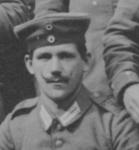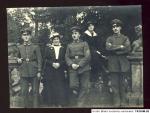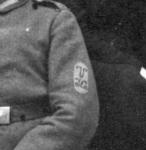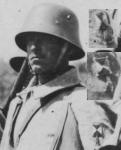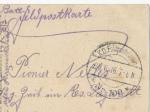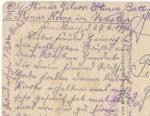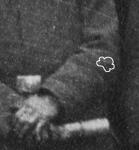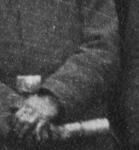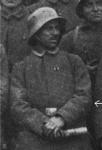
Thomas W
For Deletion-
Posts
788 -
Joined
-
Last visited
-
Days Won
3
Content Type
Profiles
Forums
Blogs
Gallery
Events
Store
Everything posted by Thomas W
-
I recently bought an exceptionally clear period copy of the well-known image of Ottoman shock troops being inspected on the Palestine front. I was surprised to see that the sleeve badge--rendered in red and white in artists' reconstructions--actually has tassels attached to the bottom edge. They appear to be different colors for different soldiers. All the soldiers in the photo have these tassels. Are they indications of rank?
-
That's a really interesting, controversial subject. I got into a huge flame war on another military Web site by suggesting that so many physically fit young men were killed in World War I and World War II before they could marry and have children that it may have changed the genetic makeup of Europe. That infuriated almost everyone there. Of course I didn't say it to be insulting. The reason I thought about it is that German flamethrower operators in World War I wore 70-lb flamethrowers into combat. I have photos of flamethrower operators running beside lightly equipped shock troops, and it appears that the flamethrower guys are keeping up without any problem. What if a 70-lb load was easier for the average man to carry in 1916 than it is for today's men? I read that there's nobody alive today who can use a genuine English longbow. English archers were trained from childhood to use the weapon, and they developed massively strong upper bodies. But what if there's a genetic component involved? What if the prime physical specimens were killed in both world wars before they could pass along their genes, and that's the real reason there's nobody alive today who can manage an English longbow? Giraffes and elephants are much smaller today than they were at the turn of the century, because the largest ones were killed by trophy hunters. Let the flame war begin!
-
Wish I knew more about this photo. I found it on Imageshack. It's a genuine Wex flamethrower, but the uniform has lots of anomalies. No Garde Litzen on the collar, and the cuffs are wrong for the M.1915 Bluse. The sleeve badge is in the Sturmbataillon No. 5 (Rohr) position; I can't tell if the badge is the right pattern or not. The trousers appear to be riding breeches, and the boots don't look German. The caption in the upper right says Piave front, 1917, assault pioneer of Garde-Fusilier-Regiment. Museum mannequin? Private collection? Who knows?
-
I'm sure that the flamethrower platoons mandated in late September of 1918 didn't have any official badges. But it's entirely possible that some men--who were trained by the Death's Head Pioneers of the Garde-Reserve-Pionier-Regiment--scrounged up skull-and-crossbones badges on their own. The Austrian assault battalions were trained by Sturmbataillon Nr. 5 (Rohr); the Austrians were impressed by the death's-head sleeve badge worn by Rohr's flamethrower troops and adopted the skull-and-crossbones for many of their assault formations. It's possible that some line pioneers trained by the Death's Head Pioneers liked the badge and bought locally manufactured skull-and-crossbones insignia, cut them crudely out of cloth, or had metal versions sent from home. That would only take a few days.
-
War Ministry Order No. 1672. 18. G. A6, dated September 28, 1918, decreed that all pioneer companies on the western front form a flamethrower platoon for antitank warfare. Each would be armed with six small flamethrowers. It could be that some of these platoons used death's-head insignia in imitation of the flamethrower regiment.
-
I have a pen-pal who's a recently retired major in the Russian army. He worked in the chemical-warfare branch, so he's very knowledgeable about Russian flamethrowers. I contacted him through his Web site when I was researching my last book. He's a great guy, but when the topic turns to Germany, he becomes one of the scariest, most extremist people on the planet. His approach is "Nuke them all and let God sort them out." His father and father-in-law both fought in the Great Patriotic War. The memories of what the Nazis did to Russia are still very fresh.


